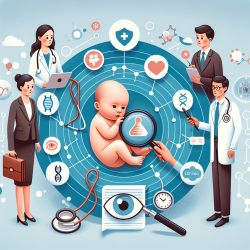Introduction
In the ever-evolving field of speech-language pathology, the integration of evolutionary biology principles can provide profound insights into the development and treatment of communication disorders. The research article "Evolutionary biology within medicine: a perspective of growing value" by Gluckman and Bergstrom emphasizes the importance of incorporating evolutionary perspectives into medical research and education. This approach not only enhances our understanding of health and disease but also offers a comprehensive framework for developing innovative therapeutic strategies.
The Value of Evolutionary Biology in Speech Therapy
Evolutionary biology provides a unique lens through which we can examine the origins and variations of speech and language disorders. By understanding the evolutionary adaptations and trade-offs that have shaped human communication, practitioners can develop more effective, data-driven therapeutic interventions. Here are some key insights from the research that can be applied to pediatric speech therapy:
- Understanding Individual Variability: Evolutionary principles highlight the origins of individual differences in vulnerability to communication disorders. This understanding can guide personalized therapy plans that cater to the unique needs of each child.
- Addressing Developmental Trade-offs: The concept of trade-offs in evolutionary biology explains why certain traits, such as early speech development, might come at the cost of other developmental processes. Recognizing these trade-offs can help practitioners balance therapy goals with overall child development.
- Incorporating Environmental Influences: Rapid environmental changes can lead to mismatches between a child's evolutionary adaptations and their current environment. Speech therapists can use this knowledge to create environments that better support natural communication development.
Practical Applications for Practitioners
Integrating evolutionary biology into speech therapy practice involves a shift towards a more holistic understanding of communication disorders. Practitioners are encouraged to:
- Explore Evolutionary Hypotheses: By considering both proximate (immediate causes) and ultimate (evolutionary reasons) explanations for speech disorders, therapists can develop more comprehensive treatment plans.
- Engage in Cross-disciplinary Learning: Collaboration with experts in evolutionary biology and related fields can enhance the depth of understanding and improve therapeutic outcomes.
- Encourage Further Research: Practitioners should advocate for and participate in research that explores the evolutionary underpinnings of speech and language development, contributing to a growing body of evidence-based practice.
Conclusion
By embracing the insights offered by evolutionary biology, speech-language pathologists can enhance their practice and improve outcomes for children. This approach not only enriches the understanding of communication disorders but also empowers practitioners to make informed, data-driven decisions that align with the natural development of human communication.
To read the original research paper, please follow this link: Evolutionary biology within medicine: a perspective of growing value.










